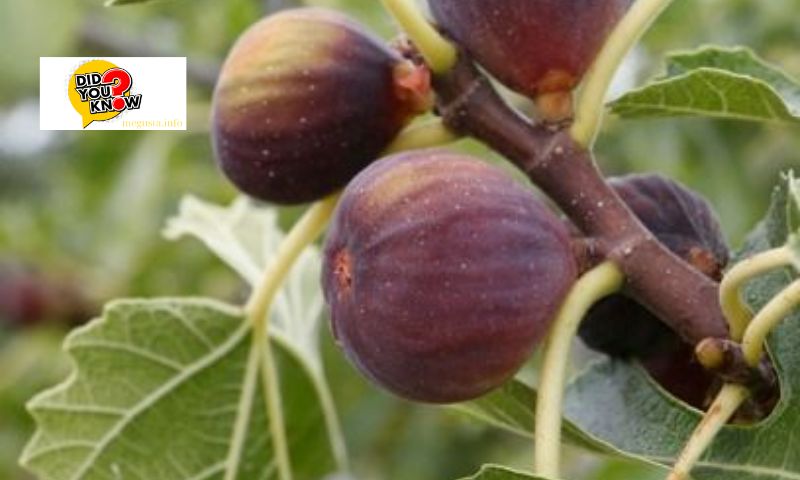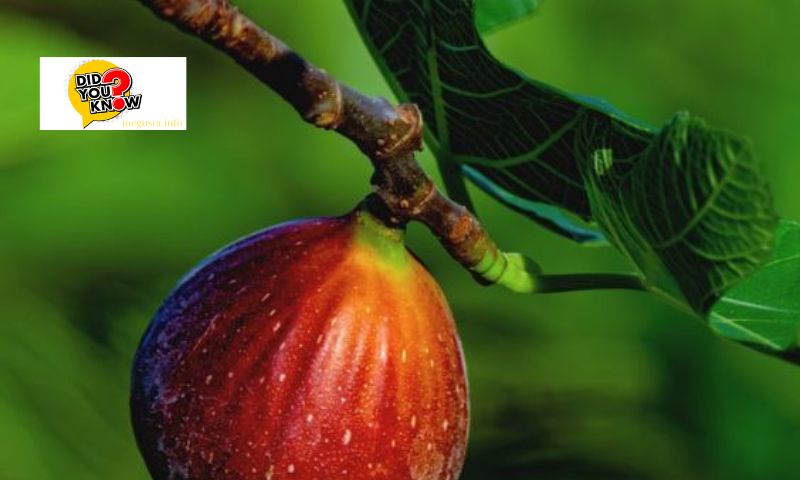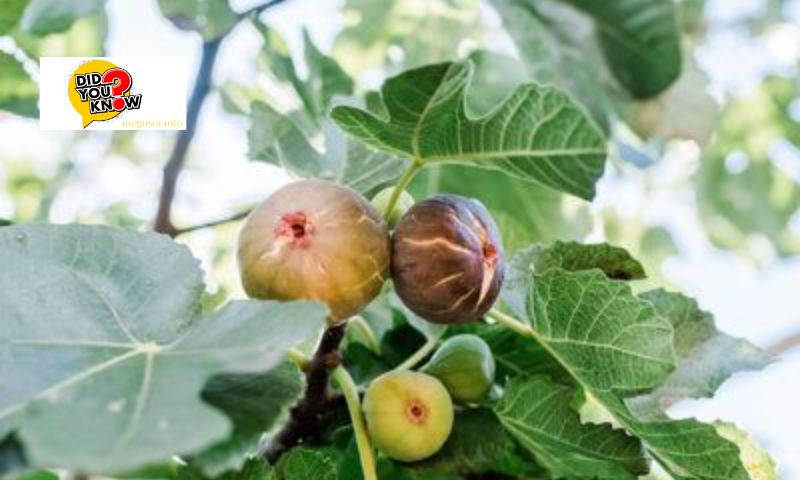Fig trees (Ficus carica) are cherished for their sweet, nutritious fruit and their lush foliage, making them a popular choice for home gardens and orchards alike. However, fig trees don’t always produce fruit as expected, leading gardeners and farmers to wonder, “Why does the fig tree not bear fruit?” Understanding the factors influencing fruit production in fig trees is crucial for maximizing yield and ensuring healthy growth. This article from Megusta.info will discover all!
Factors Influencing Fruit Production in Fig Trees

-
Climate and Weather Conditions
The productivity of fig trees is significantly influenced by climatic factors such as temperature, humidity, and rainfall. Fig trees thrive in warm, Mediterranean-like climates with plenty of sunlight. They are sensitive to frost, which can damage new growth and inhibit fruit production. Ideally, fig trees require a long, warm growing season to develop and ripen fruit properly.
In regions with erratic weather patterns or extreme temperatures, fig trees may struggle to set fruit. Consistent weather conditions during the growing season are essential for reliable fruiting. Adequate sunlight promotes photosynthesis and energy production, which are crucial for fruit development.
To mitigate the adverse effects of weather fluctuations, gardeners can consider planting fig trees in sheltered locations or using protective measures such as row covers or mulching during colder months.
-
Soil Quality and Nutrient Availability
The health and fertility of the soil directly impact the fruiting ability of fig trees. Fig trees prefer well-drained, loamy soil with a pH level between 6.0 and 6.5. Soil that is too compacted or waterlogged can impede root growth and nutrient uptake, leading to poor fruit production.
Essential nutrients such as nitrogen, phosphorus, potassium, and calcium are vital for fig tree growth and fruiting. Soil deficiencies or imbalances can result in stunted growth and fewer fruits. Regular soil testing and amendments with organic matter or balanced fertilizers can help maintain optimal soil conditions for fig trees.
Mulching around the base of fig trees helps retain soil moisture, regulate soil temperature, and suppress weed growth. Organic mulches also break down over time, enriching the soil with nutrients essential for fruit development.
-
Pollination Requirements
Fig trees have a unique pollination process that involves tiny, specialized wasps known as fig wasps (Blastophaga spp.). These wasps are responsible for pollinating fig flowers inside the fruit, where they lay their eggs. The intricate relationship between fig trees and fig wasps ensures successful pollination and fruit set.
In some fig tree varieties, pollination is parthenocarpic, meaning they can produce fruit without pollination. However, even parthenocarpic fig trees benefit from the presence of fig wasps for optimal fruit development. Factors such as the availability of fig wasps and their activity during the flowering season can affect fruit yield.
Gardeners cultivating fig trees in regions where fig wasps are absent may need to manually assist with pollination by gently shaking branches during the flowering period. This practice helps distribute pollen and encourages fruit formation.
Common Problems Preventing Fruit Formation

-
Young Trees and Maturity
Fig trees typically take several years to reach maturity and start bearing fruit. Young fig trees focus on establishing a strong root system and developing foliage before allocating energy to fruit production. Inexperienced gardeners may mistake the lack of fruit on young trees as a problem when it is a natural part of the tree’s growth cycle.
Providing adequate care and patience during the initial years ensures healthy growth and prepares young fig trees for future fruiting. Proper pruning and training help shape the tree and encourage the formation of fruit-bearing branches as the tree matures.
In some cases, selecting fig tree varieties known for early fruiting can expedite the process of achieving a bountiful harvest. Understanding the specific growth habits and requirements of chosen fig varieties is essential for successful fruit production.
-
Pest and Disease Control
Pests and diseases can hinder fruit production in fig trees by damaging foliage, flowers, and developing fruit. Common pests affecting fig trees include fig beetles, scale insects, spider mites, and nematodes. These pests feed on plant tissues, weaken the tree, and reduce its ability to produce fruit.
Implementing integrated pest management (IPM) practices helps control pest populations while minimizing the use of chemical pesticides. IPM strategies include monitoring pest activity, promoting natural predators, and employing cultural practices such as pruning infected branches and improving overall tree health.
Diseases such as fig rust, leaf spot, and root rot can also impact fig tree vitality and fruiting. Proper sanitation, good air circulation, and disease-resistant cultivars contribute to disease prevention and management. Regularly inspecting fig trees for signs of pests and diseases allows early intervention and effective treatment.
-
Pruning and Maintenance
Pruning plays a crucial role in shaping fig trees and optimizing fruit production. Proper pruning techniques promote airflow within the canopy, reduce overcrowding, and stimulate the growth of fruit-bearing shoots. Pruning also removes dead or diseased wood, which can harbor pests and pathogens detrimental to fig tree health.
Timing is key when pruning fig trees, as improper pruning practices can disrupt the tree’s natural growth cycle and delay fruit production. Pruning during the dormant season encourages vigorous spring growth and enhances the tree’s overall productivity. Gardeners should avoid heavy pruning immediately before the flowering period to prevent the removal of potential fruit-bearing branches.
Regular maintenance tasks such as watering, fertilizing, and mulching contribute to the overall health and vigor of fig trees. Adequate watering during dry periods ensures proper hydration and supports essential physiological processes, including fruit development. Applying balanced fertilizers in spring and early summer provides fig trees with the nutrients needed for robust growth and abundant fruiting.
Mulching around the base of fig trees conserves soil moisture, suppresses weeds, and improves soil structure over time. Organic mulches such as compost, shredded leaves, or straw decompose gradually, enriching the soil with organic matter and essential nutrients. Mulching also moderates soil temperature fluctuations, which is beneficial for root health and overall tree vitality.
Cultural Practices to Enhance Fruit Production

-
Watering and Irrigation
Fig trees have moderate water requirements and benefit from consistent soil moisture throughout the growing season. Adequate watering promotes healthy root development and supports the uptake of essential nutrients necessary for fruit formation.
During periods of extended drought or high temperatures, supplemental irrigation helps maintain soil moisture levels and prevents stress-induced fruit drop. Deep watering encourages deep root growth and enhances the tree’s resilience to environmental fluctuations.
Gardeners should monitor soil moisture regularly and adjust watering practices based on weather conditions and tree needs. Mulching around the base of fig trees helps retain soil moisture, reduce evaporation, and minimize weed competition, creating an optimal growing environment for fruit production.
-
Fertilization
Proper fertilization provides fig trees with essential nutrients required for vigorous growth and abundant fruiting. Soil testing helps determine nutrient deficiencies or imbalances, guiding the selection and application of appropriate fertilizers.
Fig trees benefit from balanced fertilizers formulated specifically for fruit-bearing plants. Organic fertilizers such as compost, well-aged manure, or fish emulsion release nutrients slowly and improve soil structure over time. Applying fertilizers in early spring and again after the first harvest supports continuous growth and enhances the quality of subsequent fruit crops.
Gardeners should avoid over-fertilizing fig trees, as excessive nitrogen can promote vegetative growth at the expense of fruit production. Following manufacturer recommendations and applying fertilizers evenly around the drip line of the tree promotes uniform nutrient distribution and minimizes nutrient runoff.
-
Seasonal Care
Seasonal care practices contribute to the overall health and productivity of fig trees throughout the year. Spring is an essential time for pruning, fertilizing, and monitoring fig tree growth to encourage robust fruiting. Removing dead or damaged branches and thinning overcrowded growth improves air circulation within the canopy and reduces the risk of pest infestations and disease outbreaks.
During the growing season, regular inspections allow gardeners to identify and address potential issues such as pest activity, nutrient deficiencies, or environmental stressors promptly. Adjusting cultural practices based on seasonal changes and local climate conditions supports optimal fig tree health and enhances fruit development.
Fall is an opportune time for mulching around the base of fig trees to conserve soil moisture, regulate soil temperature, and enrich the soil with organic matter. Applying a thick layer of mulch minimizes weed growth and protects shallow root systems from temperature fluctuations during winter months.
Conclusion
Understanding the factors influencing fruit production in fig trees is essential for cultivating healthy, productive trees in home gardens and orchards. From climate and soil quality to pollination requirements and cultural practices, each factor plays a vital role in determining the success of fig tree fruiting.
By addressing potential challenges such as adverse weather conditions, nutrient deficiencies, and pest infestations, gardeners can enhance fruit production and enjoy a bountiful harvest of sweet, flavorful figs. Implementing proper pruning techniques, maintaining soil fertility, and providing adequate water and care throughout the growing season contribute to the long-term health and vitality of fig trees.

